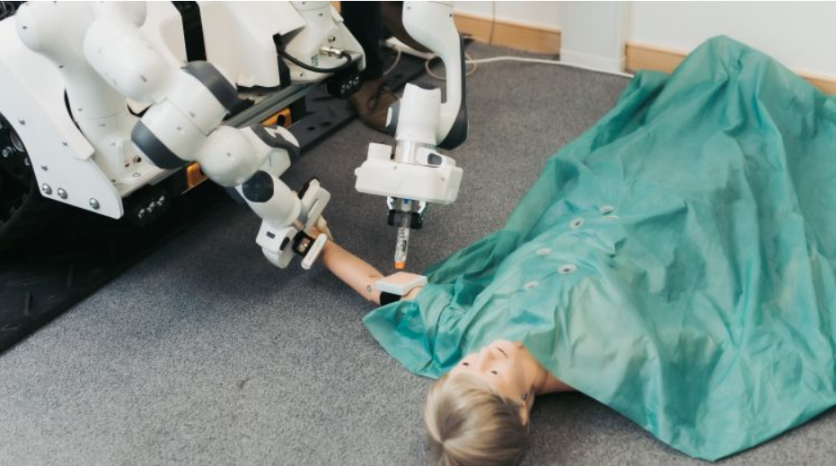In the face of environments too perilous for conventional medical teams, a game-changing solution emerges - robotic medics.
Pioneered by researchers at the University of Sheffield, the special vehicle equipped with robotic arms promises to modify medical triage in high-risk situations such as humanitarian disasters and conflict zones.
Life-Saving Robot Medics

At the heart of this revolutionary technology lies the "medical telexistence (MediTel) solution," giving birth to a state-of-the-art mobile robotic-controlled uncrewed ground vehicle (UGV).
Utilizing virtual reality (VR) technology, this vehicle establishes seamless communication with doctors, enabling the remote execution of essential medical triage without risking the lives of on-site medical professionals.
Remote Medical Examination Within 20 Minutes
Crafted in a remarkable nine-month period, the integrated vehicle features two advanced robotic arms capable of remotely operating medical instruments.
In a matter of 20 minutes, the robotic medic conducts a thorough initial examination of victims, assessing vital signs like temperature, blood pressure, and heart rate, Interesting Engineering writes.
Further, its arms are adept at palpating the abdomen and administering pain treatment through an auto-injector, with real-time data continuously transmitted to the remote operator throughout the evaluation.
David King, Head of Digital Design at the University's Advanced Manufacturing Research Centre (AMRC), expresses the transformative impact:
"Our MediTel project has demonstrated game-changing medical telexistence technology that has the potential to save lives and provide remote assessment and treatment of casualties in high-risk environments such as humanitarian disasters," he said.
Funding and Recognition for Telexistence Technologies
The groundbreaking MediTel project secured financing through a two-phase £2.3 million innovation competition led by the Defence and Security Accelerator (DASA).
With joint funding from the Defence Science and Technology Laboratory (DSTL) and the Nuclear Decommissioning Authority, MediTel stands alongside two other telexistence technologies.
Nicky Armstrong, technical lead at Dstl, pinpoints the potential of telexistence technologies to remove end users from harmful environments and rapidly insert specialists.
Robots have so much potential in the field of healthcare. The robot medics proved that what is hazardous to humans can be done by these machines.
Aside from these robot vehicles, there's also a robot dog that can guide blind and visually impaired individuals.
If you want to learn more about medical robots, you can browse Case Western Reserve University's blog. It features the da Vinci Surgical Robot, the Xenex Germ-Zapping Robot, the PARO Therapeutic Robot, the CyberKnife, and the TUG.
All of these robots have helped the doctors to deal with patients easily. They lighten the load for the experts in the field of biomedical engineering.

ⓒ 2025 TECHTIMES.com All rights reserved. Do not reproduce without permission.




